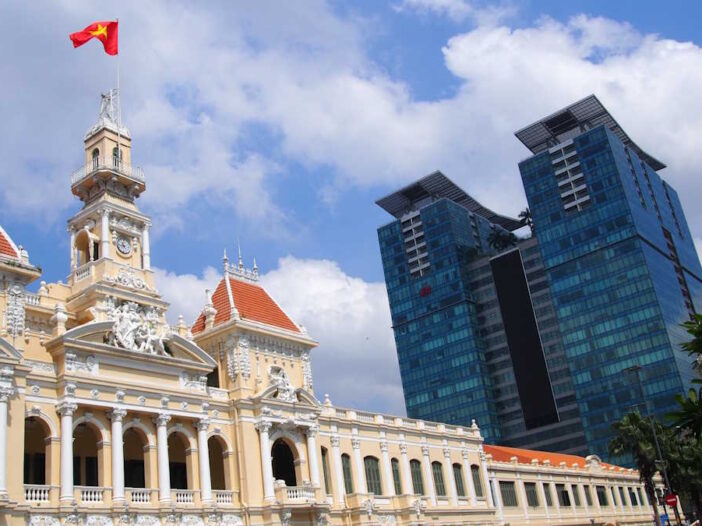
Ho Chi Minh City, formerly Saigon, in Vietnam: tips on how to get there, how long to stay, where to stay, what to visit, shopping, and food.
Another business trip, and this time the destination was Vietnam’s largest and most important city, Ho Chi Minh City, also known as HCMC—a term I’ll use here. It’s still widely referred to as Saigon, the name it held during European occupation until 1975.
During the nearly one month I spent in HCMC, I aimed to follow the philosophy: ‘Work hard, play harder.’ I only faltered on days when fatigue got the better of me. Here, I’ll share my experiences from the perspective of both a business traveler and a tourist.
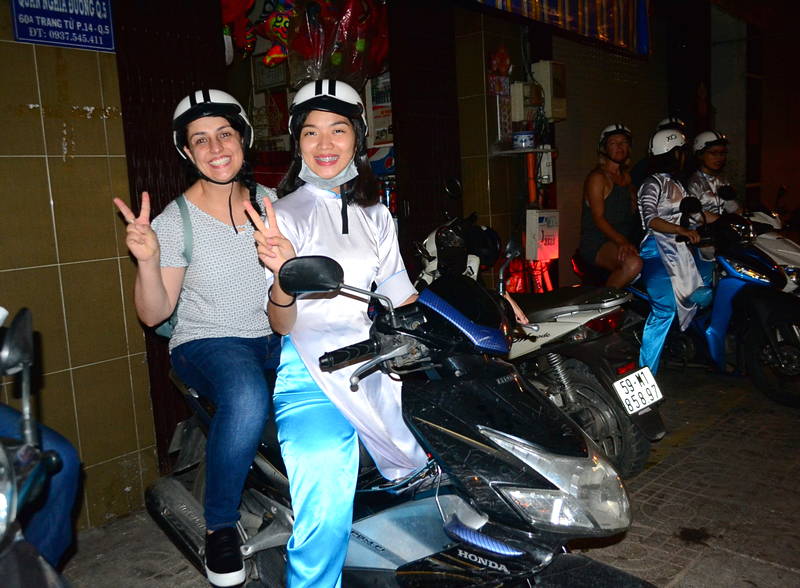
How to get to Ho Chi Minh City in Vietnam
Since I departed from Germany, my route went through Thailand and then on to Vietnam. I flew with Thai Airways, and it was a 17-hour flight plus a layover, so it’s hard to avoid arriving exhausted.
Not to mention the infamous jet lag due to the time difference—Vietnam is 6 hours ahead of Europe and 11 to 12 hours ahead of America.
Find the best deals and options for flights and airport transfers to your hotel.
At HCMC Airport – Visa, Leaving the Airport and Exchanging Money
HCMC’s international airport is Tan Son Nhat, which is relatively small and a bit outdated compared to major connecting hubs like Singapore and Thailand, which are attractions in their own right.
Arrival was smooth, as was the passage through immigration. Since I already had a work visa, I didn’t need to visit the Visa On Arrival counters, but from what I observed, the process looked straightforward.
The Visa On Arrival can be obtained through various agencies that provide the service online; you fill out a form and pay approximately US$25.
Another point to consider is the yellow fever vaccine. I wasn’t asked about it at immigration, but it’s wise to bring the International Vaccination Certificate to avoid any issues.
Before picking up my bag, I exchanged money at the airport. Since I had been monitoring exchange rates, I knew it was a good deal and acted quickly. It was fast and convenient.
Upon leaving the arrivals area, I ignored the crowd offering transportation and went directly to a taxi booth, paying 180,000 Dongs for the ride to my hotel. A fair price, considering I paid 150,000 Dongs for the return trip.
In my research, I saw that many hotels offer transfer services, and it’s also possible to reach the city center by public transport. However, after hours of flying, air conditioning is a welcome relief in the nearly 40ºC heat and high humidity.
Although District 1 of HCMC is only 8 km away, the journey from the airport takes around an hour. The city’s chaotic traffic consumes every second of even short trips, making São Paulo’s traffic seem tame by comparison.
Where to stay in Ho Chi Minh City in Vietnam
Ho Chi Minh City is divided into districts, or Quân, similar to the way Paris is organized. There are 24 districts in total, but for tourists, the main focus is on Districts 1, 2, and 5. After learning a bit about the city’s dynamics, I found that the best area to stay is District 1, known as Q1, where 99% of the main attractions are located.
As I said, I went for work, but if I was just going to visit the city, I would stay in the Quân 1 area, close to where the HCMC Opera House is , as it is close to everything, especially the restaurants.
Well, since I had to stay with the company team, I didn’t have much choice in choosing the hotel. I stayed at the New World Saigon Hotel and thankfully the hotel was good. Huge, comfortable room, great breakfast and excellent service.
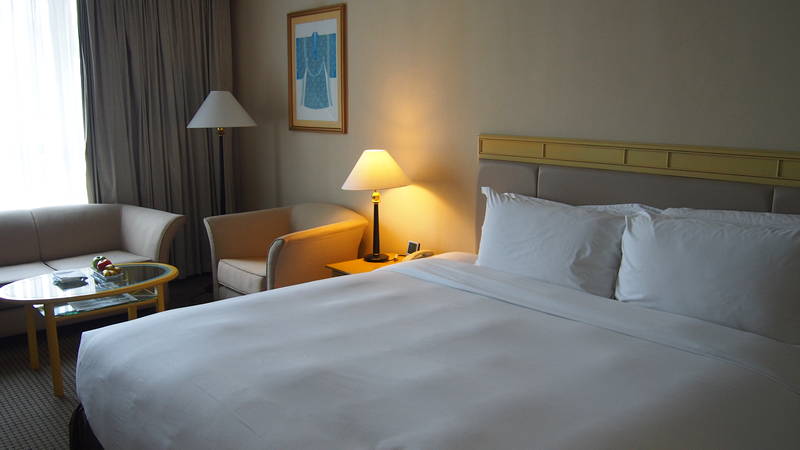
In terms of location, the walk from the hotel to the square where city hall is located takes about 20 minutes. It’s not far, but with the city’s sauna-like heat, it felt much longer—even at night.
If you are looking for a more Westernized area, then look for hotels in Quân 7 , which is where expats live and everything there looks like the gardens of São Paulo. However, be aware that in this area, you will have to take a taxi for everything. It’s all a cost-benefit analysis.
Accommodation Deals in Ho Chi Minh City
Find the best deals and offers for accommodation in Hotels, Hostels and Bed & Breakfasts in Saigon, Ho Chi Minh City, Vietnam:
Booking.comHow long to stay in Ho Chi Minh
I believe that three full days in HCMC is enough to get to know the city and indulge in Vietnamese food.
During this period you can still take a full-day tour of the Mekong River Delta, which I highly recommend, take a half-day tour of the Cu Chi Tunnels and even take a night tour. My suggestion is to take a Food Tour with Sights , which is what I did.
Oh! And for those who like it, there’s still one night for a performance at the city’s Opera House.
Ho Chi Minh City Tour Deals
Find the best deals and offers on guided tours, excursions and tickets to attractions in Saigon, Ho Chi Minh City, Vietnam:
Transportation in Ho Chi Minh City
The best way to explore District 1 is on foot. There are so many interesting things to see and discover that taking a taxi isn’t worth it—the little surprises along the way are part of the city’s charm.
For more distant spots, like the Jade Emperor Pagoda, Cholon in District 5, or the Ho Thi Ky Flower Market in District 10, taking a taxi is a good idea. I walked, but it took over an hour in the intense heat. For taxis, the unanimous recommendation was to use Vinasun or Mai Linh.
Other options include riding a motorbike around the city (I only did this on the Night Tour); using Uber or Grab, a competing app; and, for those seeking a bit more adventure, taking the bus. The HCMC subway is currently under construction in partnership with the Japanese government, and it looks like it’ll be a while before it’s completed.
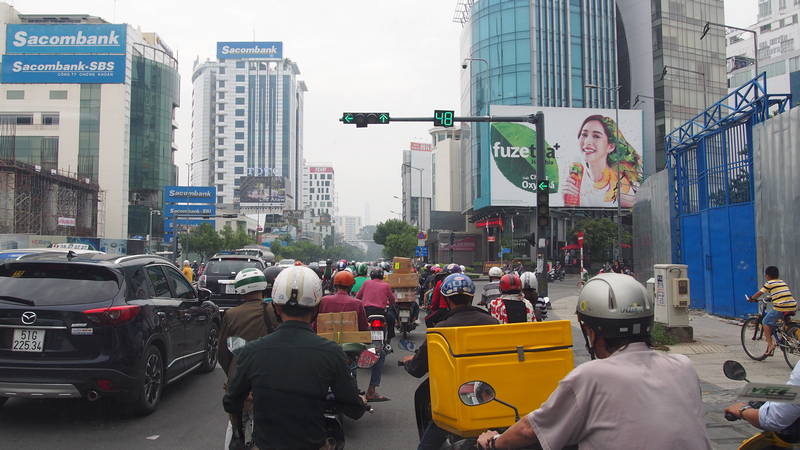
My impressions of Ho Chi Minh City in Vietnam
I won’t go into detail about the country’s history, but I found it interesting that, after years of conflict and cultural influences, Ho Chi Minh City has become a fascinating blend of different elements.
The city developed areas contrasting sharply with slums along the banks of the Saigon River—which in certain spots has that same dark color and unpleasant smell.
Along the way, you’ll notice streetlamp posts tangled with cables, trash on the sidewalks, and the smell of pollution from cars and motorcycles, which made my life as an allergy sufferer difficult.
Seeing the city from above as the plane lands in HCMC gives you a good sense of what I mean.
So, many of the things that shock European visitors felt familiar to me. What surprised me the most were the sounds, the vibrant colors of endless ads, the lights in commercial buildings, how people live simpler lives while keeping their eyes on the future, how a smile can make all the difference, how fresh the food is, and the fascination with light skin and Western features.
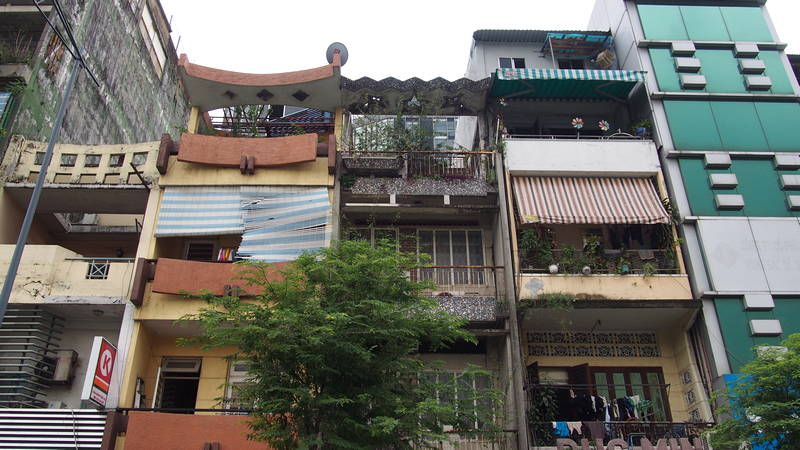
In fact, this obsession with appearance is serious business. Women cover themselves from head to toe to avoid the sun, even in the scorching heat. Besides spending heavily on cosmetics, stores selling skin-lightening products are everywhere, offering them at very affordable prices. During my stay in the city of Ben Luc, several women stopped me to comment on my nose and eye color.
What to visit in HCMC in Vietnam
But let’s get to the point: What to visit in HCMC?
For trinkets and bargain hunting, head to Ben Thanh Market, where both tourists and locals haggle over every item in the crowded aisles. In the evenings, a food market opens up in the side streets of the market, making it a great place to explore local delicacies.
The Mariamman Hindu Temple was my first experience with a Hindu temple. It’s very colorful and surprisingly peaceful compared to the frenzy of the city streets.
The Reunification Palace, an important and imposing building with 1960s architecture, played a key role in several significant events in Vietnam’s history. While the palace itself isn’t particularly fascinating, what I enjoyed most was visiting its bunker, which houses the communications center, the war room, and escape tunnels. The different colors of the rooms are stunning. The palace closes during lunch hours, and the entrance fee is 30,000 Dongs.
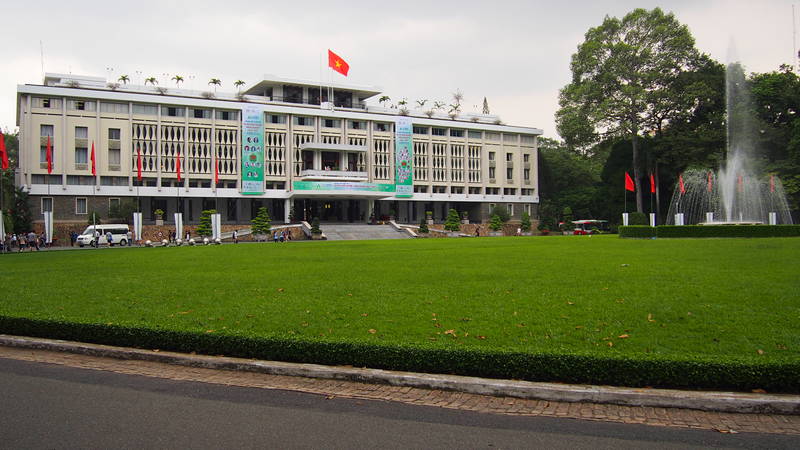
The War Remnants Museum can be described in two words: shocking and heartbreaking. It’s important to remember the consequences of war, but for me, it was overwhelming. The museum displays a variety of artifacts, works of art, and photos that tell the story of the Vietnam War.
Is it worth a visit? Absolutely! We’re usually accustomed to seeing the war from the American perspective in movies, so experiencing it from the perspective of the victors is a whole new perspective. The museum is also closed during lunch hours. Entrance fee: 15,000 Dongs.
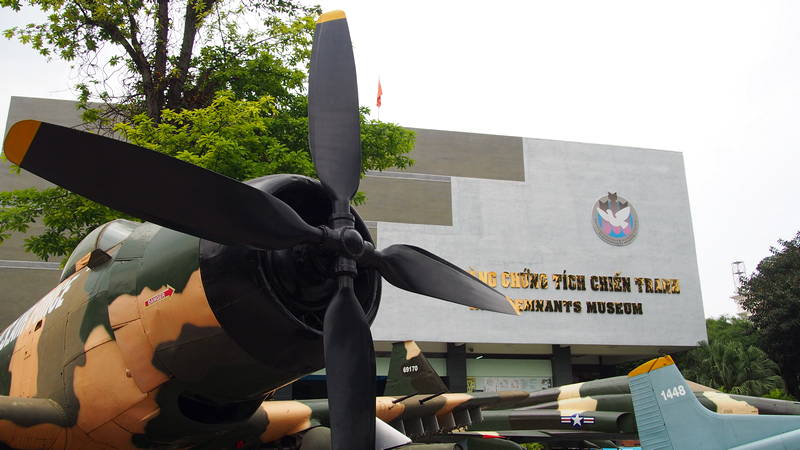
If you want to take a breather after leaving the museum, stop by Turtle Square to watch kids taking selfies while enjoying an iced coffee.
Nearby is Saigon’s Notre Dame Cathedral. Built between 1877 and 1883 during the French occupation in honor of the Virgin Mary, the cathedral is considered the heart of the city. Unfortunately, it was under renovation during my visit, so I wasn’t able to go inside. However, in the cathedral square, there is a statue of the Virgin Mary.
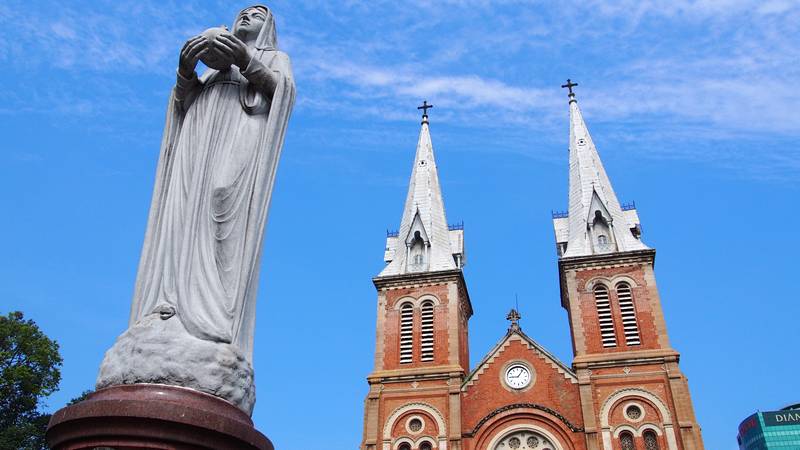
Interestingly, 80% of the population in Vietnam does not follow any specific religion, and the various Catholic churches scattered throughout HCMC are used by people of many different faiths, including Buddhism, Hoahaoism, Caodaism, and Christianity. The most important aspect is celebration and thanksgiving.
Right next to the cathedral, and much more interesting, is the Central Post Office, designed by none other than Gustave Eiffel (the man who designed the Eiffel Tower). The golden-yellow building is stunning, and the walls inside are adorned with maps of the region and the country. A really fun activity is sending a postcard—I did this, and mine arrived three weeks later.
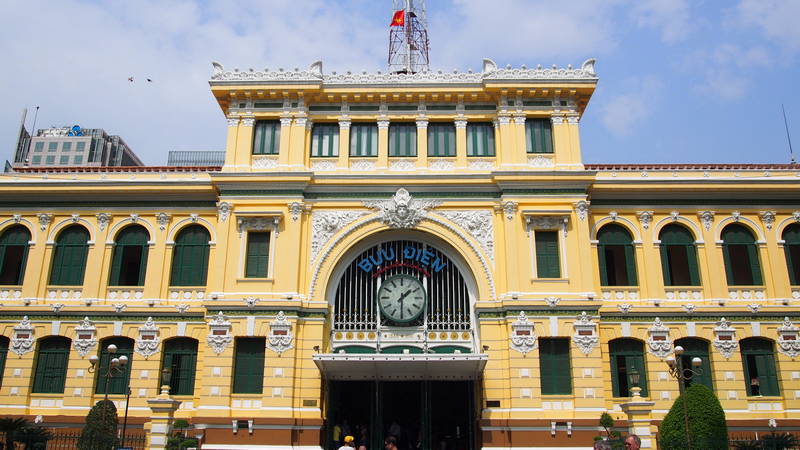
Nearby, you can visit the Hồ Chí Minh City Hall, the city’s municipal building. What a beautiful structure, especially at night. It’s not open to visitors, but the view from Tượng Chủ Tịch Square is definitely worth it.
Also in the square is the Opera House, built in 1897 and a great example of the French belle époque style. It hosts various performances, with the most popular being the AO Show, which combines music, dance, and acrobatics.
I’m terrified of heights, but I still visited the Saigon Skydeck, located in the Bitexco Financial Tower. It’s expensive—200,000 Dongs—but the view from the 48th floor is well worth it. I also went to the EON Bar, which turned out to be a big disappointment. There was no food available, and I had to wait nearly 20 minutes for a soda that cost 80,000 Dongs.
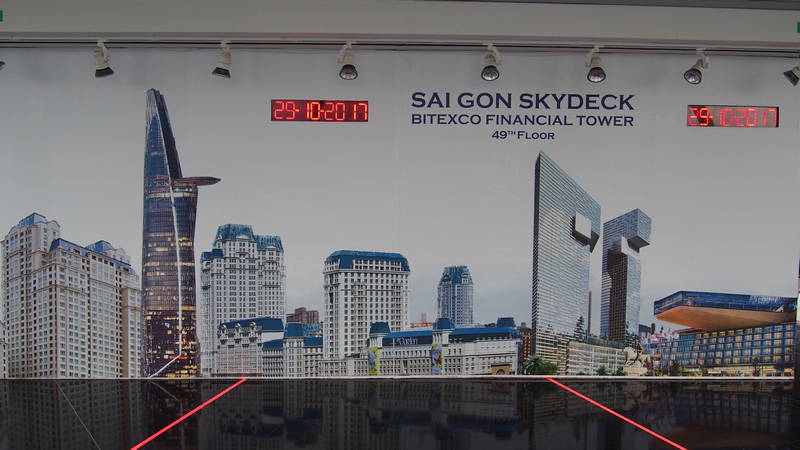
Just outside the center of District 1 is the Jade Emperor Pagoda, a Taoist temple built in 1909 to honor the god Ngoc Hoang, or simply, the Jade Emperor. The temple is stunning, and the atmosphere is something that can’t be easily described.
You have to experience the heat, the intense smell of incense, the intricately crafted statues, and watch the prayers and offerings to truly understand why it’s so fascinating. I explored every corner I could, and it was definitely worth it.
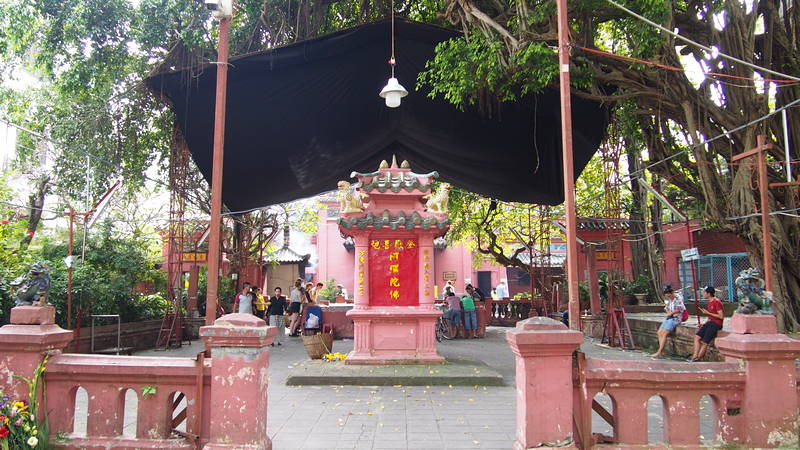
Just to take a quick look, since the hotel was right in front, I went to September 23 Park, where older men and women do exercises every morning to stretch their bones, and to Backpacker’s Street, which has a large concentration of hostels and clubs.
Another place I really enjoyed visiting, and which I detailed in my post about the tour I took, is the Ho Thi Ky Flower Market in District 10. Since it was Sunday, there were only locals doing their shopping, and I ended up becoming a bit of an attraction myself. It’s also really fun to step off the main street and get lost in the alleys filled with fresh flowers in all kinds of colors and in such large quantities.
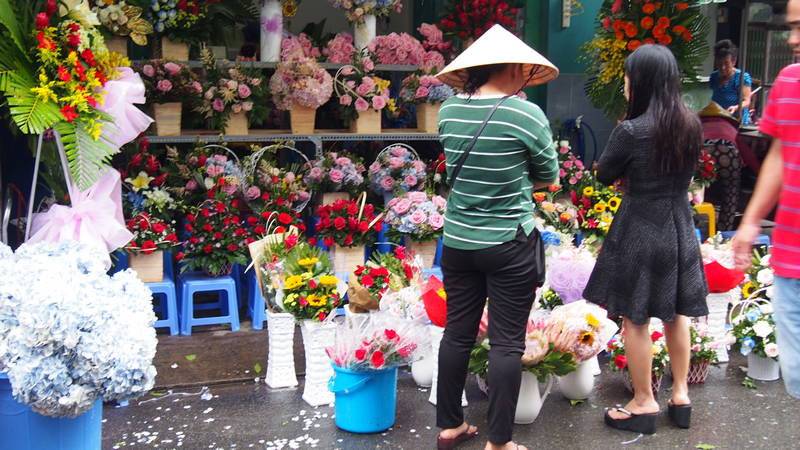
I also visited District 5, known as Cholon, but only during the tours. Personally, I don’t think it’s worth spending 200,000 Dongs on a taxi just to do a ‘Pagoda crawl’ (a walk through the various pagodas in the area).
While everything is interesting, staying there for too long can be quite tiring. There’s a lot of visual, noise, and environmental pollution. I believe that in places like these, the immersion should be brief.
Restaurants in HCMC or rather, “ Where to satisfy Genoveva in Saigon ”
People! This Vietnamese food is so good! And the best part is that this good food is available for all budgets.
The dishes I tried in HCMC were super fresh and delicious. For these tips, I tried the local cuisine and restaurants based on recommendations from the tours I took and the hotel concierge .
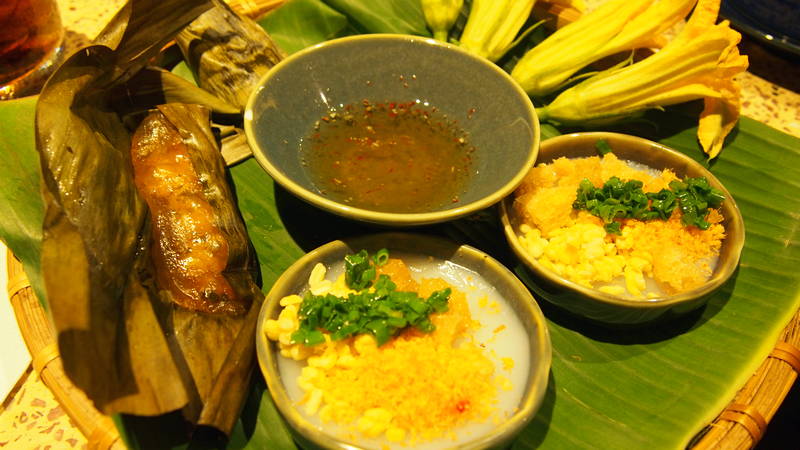
Let’s go to them:
- Huynh Hoa Bakery – Home to the most famous Banh Mi in the city. Banh Mi is a sandwich filled with various types of meat and fresh salad with Asian seasoning. The place is crowded, but the service is fast. Oh! Only take-out is available.
- Phu Long Coffee and Tea and Koi Tea – These are two of the many chains in the city that sell iced coffee, Vietnam’s flagship product, and wonderful iced teas, which were my focus.
- Burger Joint Saigon – Ok, it’s a burger, but I was in Vietnam for 3 and a half weeks, right? The burger is really good and the milkshake satisfied Genovéva’s craving for something more caloric.
- SH Garden – So, first of all, I went to this restaurant thinking it was another one… who hasn’t? But what matters is that the restaurant is good and has a great view of Tượng Chủ Tịch Square . Here I ate a dish made with tapioca and water spinach , Yum…
- Namo Artisanal Pizzeria – I came here twice because the Italian food is amazing! The pizza is delicious and the pasta… Oh! I want to go back there! It’s behind the Opera House.
- The Racha Room – Bar and nightclub, packed with “young” tourists. However, I can’t complain too much, because I ate the best gyoza of my life. It was worth every Dong spent.
- Advertisement – A popular restaurant near Notre Dame Cathedral . It was my first experience with Vietnamese food and it was a great choice. I highly recommend it.
- Nhà hàng Ngon – A beautiful and huge restaurant behind Hồ Chí Minh City Hall . The restaurant has several mini gardens and the food is delicious. The service wasn’t that great, but the place makes up for it.
Shopping in HCMC
Those who want to spend a few Dongs can venture into the millions of stores spread across the city’s themed streets, delve into local markets or even venture into shopping malls.
I will indicate the three places that I liked the most:
- Saigon Square – To buy good quality clothes at reasonable prices, without having to explore other markets. Saigon Square shopping area.
- Saigon Kitsch – It has the best souvenir options with a twist, the store is really cool and it’s worth leaving Dongs there. Saigon Square shopping mall area.
- Saigon Jane – A tiny shop with the coolest Asian animated movie t-shirts I’ve ever seen. Located in the Backpacker’s Street area.
For general shopping, I’m addicted to Miniso , a Chinese store with a Japanese concept that sells cheap, good quality trinkets.
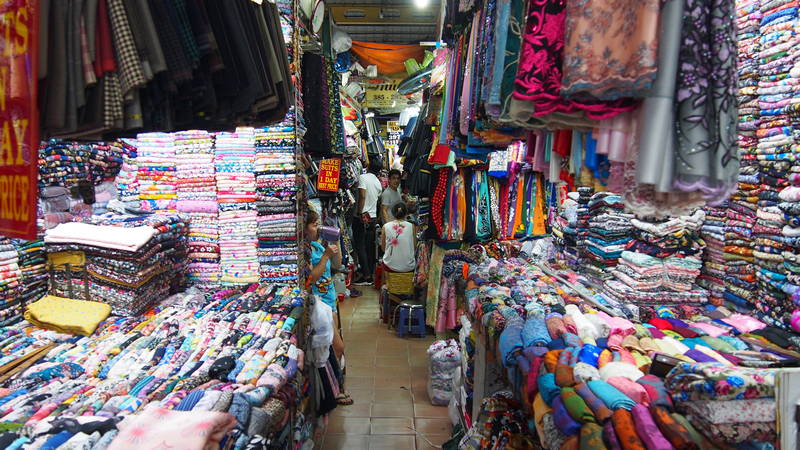
Well that’s all folks , I hope I’ve encouraged someone to visit the most frenetic city in Vietnam.
General international travel tips
For general travel tips, be sure to check out:
- The best Travel Quotes to motivate your trip on an adventure!
- Tips for using Google Flights and buying the best airfare
Where to travel next?
Other posts beautiful destination:
- Complete travel guide to visit the Romantic Road in Germany
- Berlin, Germany – Top 20 sights and things to do and visit
- What to do in New York, USA – Trave Guide and tips
- Best travel tips for Oktoberfest in Munich, Germany

Leave a Reply